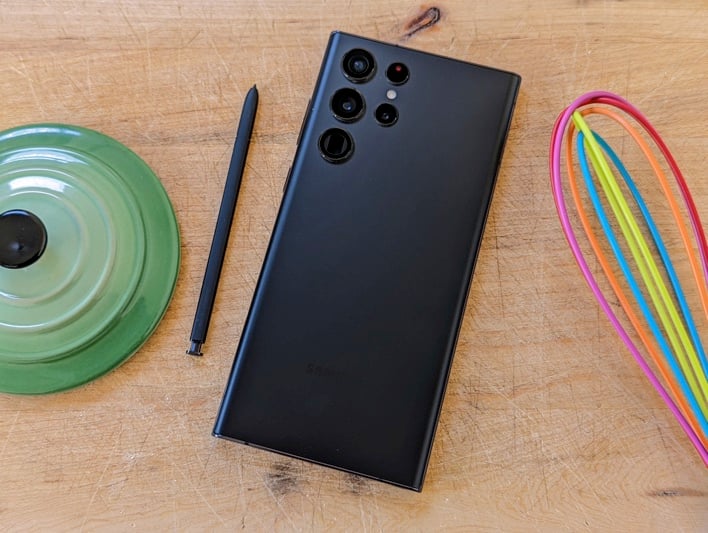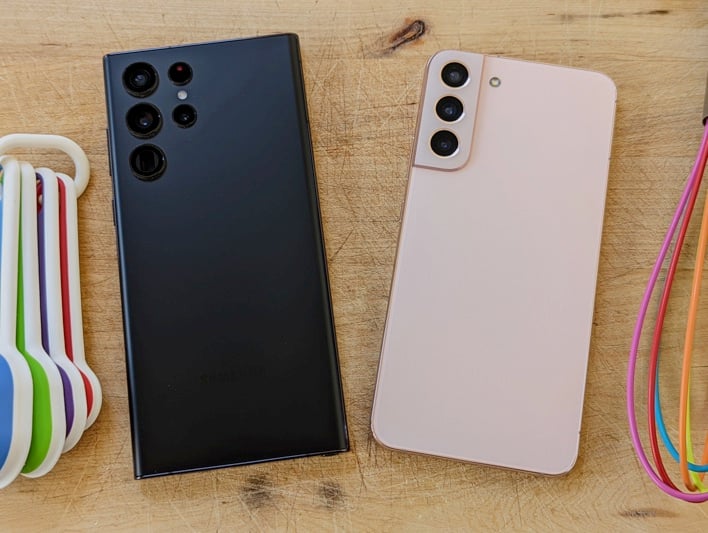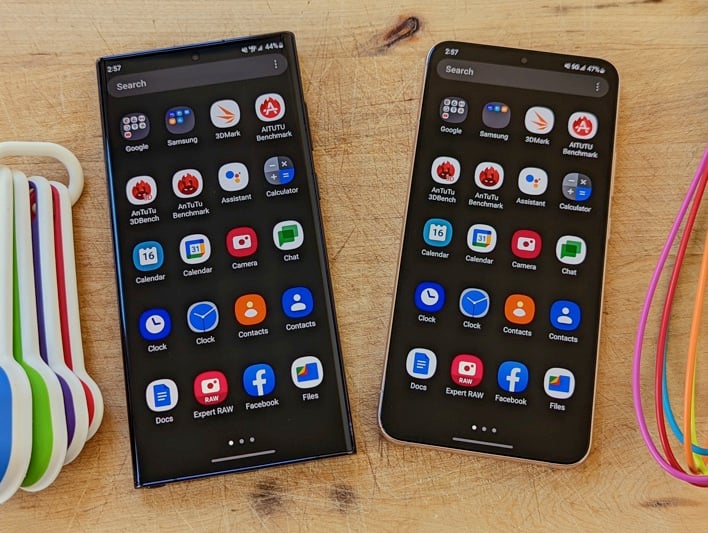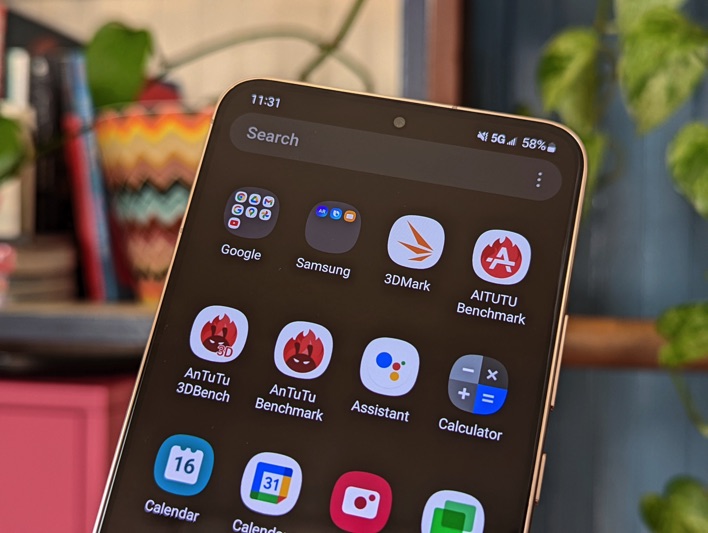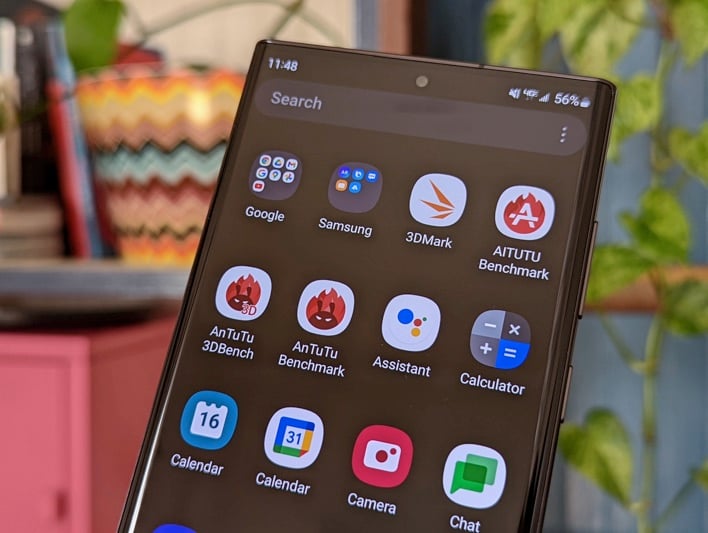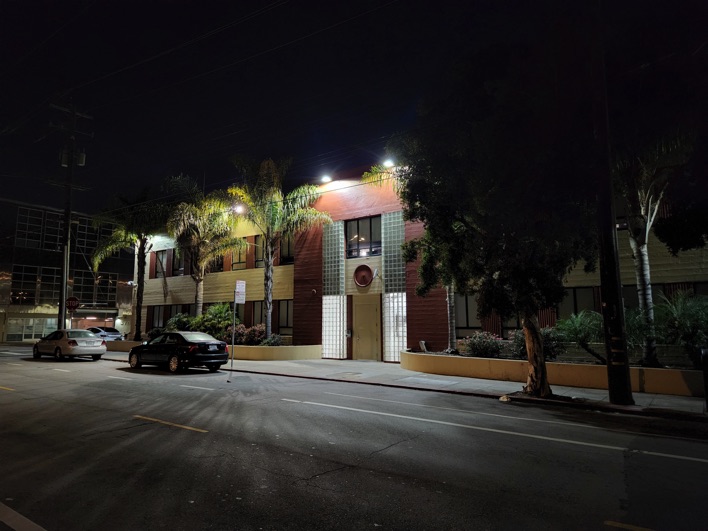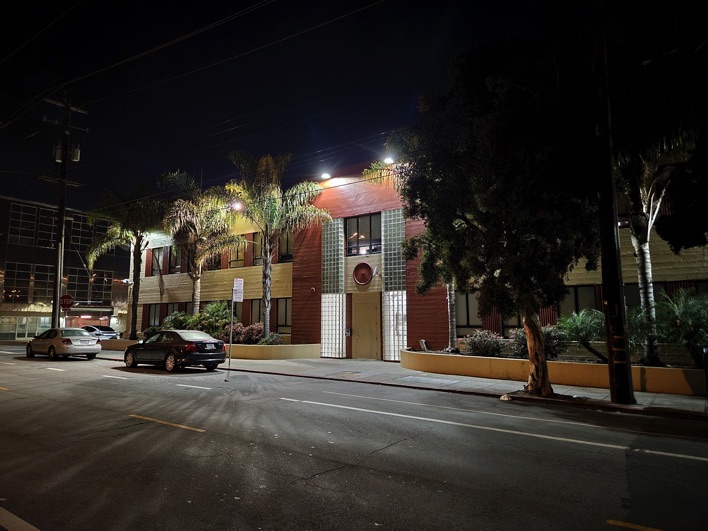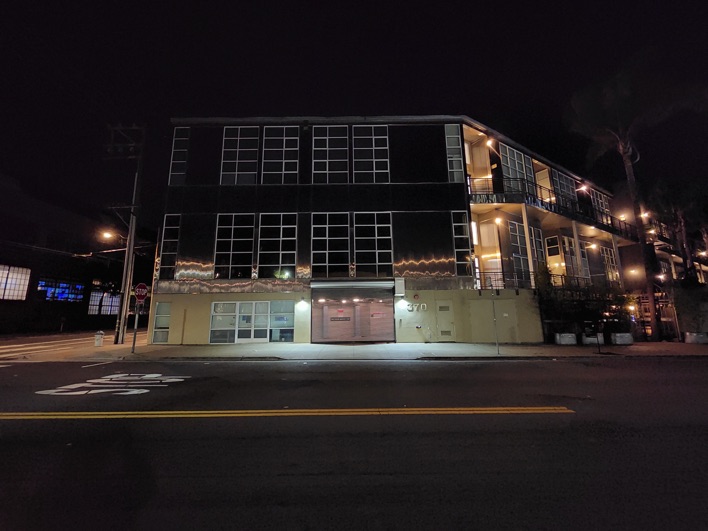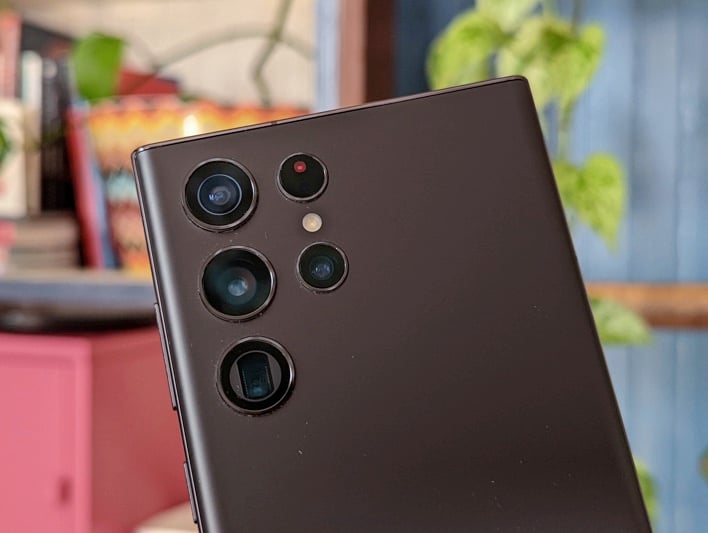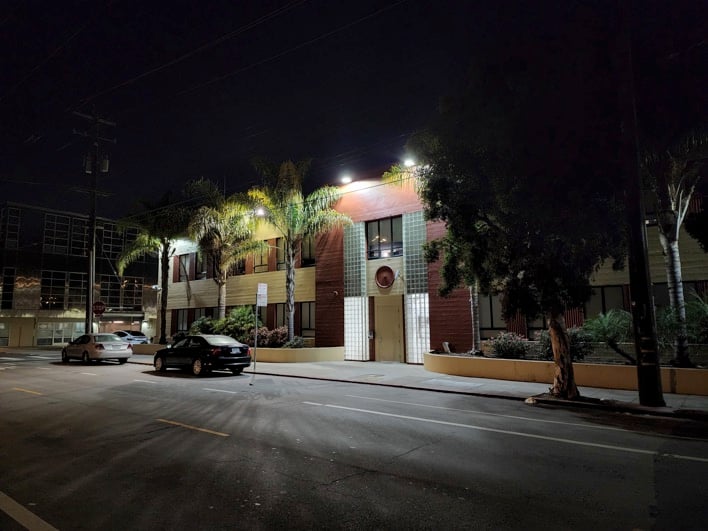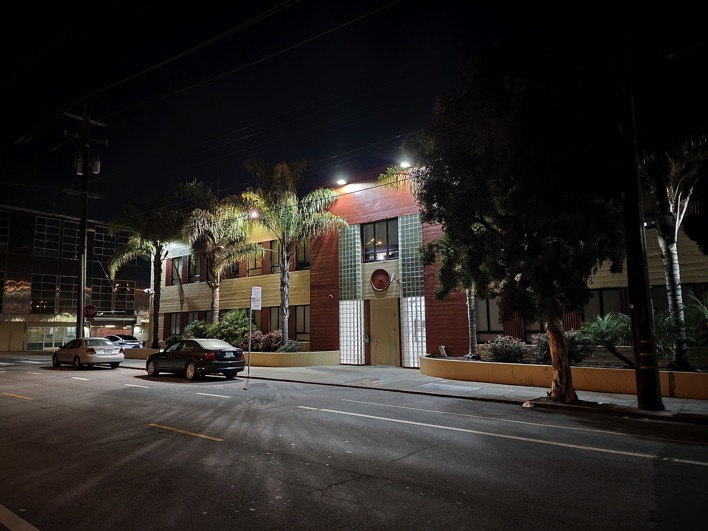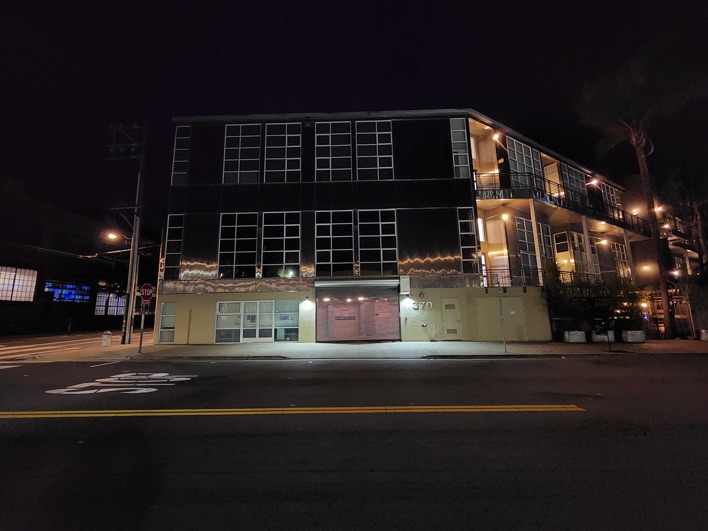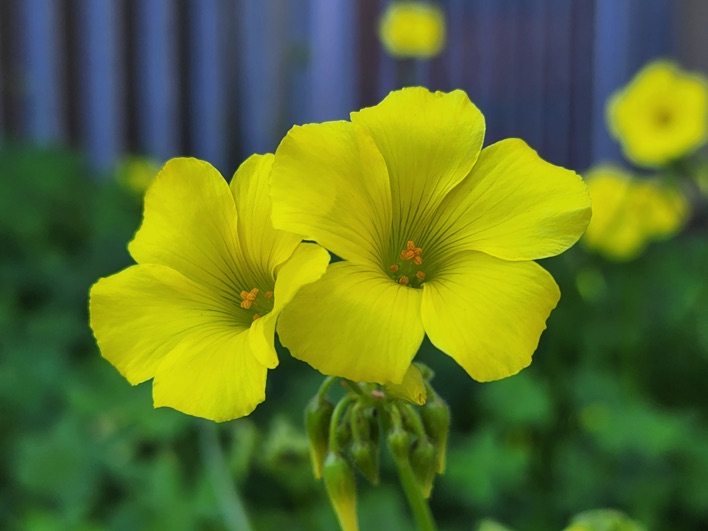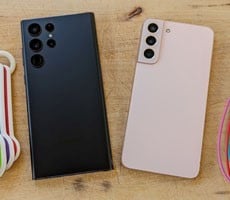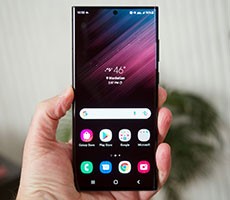Samsung Galaxy S22 Ultra And S22+ Review: Ultimate Android Flagships
But things are different this year. Samsung has a lot more riding on the S22 series, especially after last year’s lackluster flagship sales. Regardless, by all accounts, the S21 series checked all the right boxes, and the S21 Ultra in particular delivered superb imaging performance. So, besides upgrading to the latest Qualcomm Snapdragon 8 Gen 1 and Exynos 2200 4nm SoCs, how do you improve on an already solid lineup?
Turns out that Samsung chose a two-pronged strategy. For the Galaxy S22 Ultra, the company merged the Galaxy Note 20 Ultra’s design and functionality with the S21 Ultra’s camera system. Don’t let the name fool you though: the Galaxy S22 Ultra is essentially the new Galaxy Note, complete with a stowable S-Pen. But for the Galaxy S22 and S22+, Samsung took a more iterative approach by simply upgrading the shooters and making a few cosmetic tweaks.
We just spent a week or so with the Galaxy S22 Ultra and the Galaxy S22+, and this is our deep-dive review.
Samsung Galaxy S22 Ultra and S22+ Hardware And Design
As such, the S22 Ultra is a large phone – bigger even than the Galaxy S21Ultra, the Pixel 6 Pro, or the iPhone 13 Pro Max. But at 6.8 inches across, the screen is 0.1-inches smaller than the Note 20 Ultra’s. And while the frame is aluminum instead of stainless steel, Gorilla Glass Victus+ now covers both the display and the matte back. In all, we really like this rectangular look. Despite its size, the S22 Ultra feels comfortable and familiar.
The top and bottom edges are perfectly flat, and are home to the nano SIM tray, primary mic, USB Type-C port, speaker grille, and S-Pen silo (bottom left) – and to the secondary mic (top). Along the curved sides, you’ll find a volume rocker, power / lock key, and mmWave antenna window (right), but not much else (left).
With frame edges that are less curved and screen corners that are more rounded, this design feels slightly more iPhone 13-like. Interestingly, the displays are 0.1-inches smaller on both devices this year – 6.6 inches for the S22+ and 6.1 inches for the S22. Yet somehow, the bezels are even slimmer and more uniform. The result certainly looks more premium, but overall we’re less enamored with this updated design.
The layout is pretty standard around the edges, with a volume rocker, power / lock key, and mmWave antenna window on the right side, plus a speaker cover, USB Type-C port, primary mic, and nano-SIM tray along the bottom. There’s a secondary mic on top, and nothing but antenna bands on the left side.
All three Galaxy S22 models are IP68 water and dust resistant, and have a center punch hole for the front shooter plus an in-display ultrasonic fingerprint sensor. Like previous Samsung flagships, materials and build quality are top notch.
Samsung Galaxy S22+ Specs And Features
| Processing and 5G Platform | Qualcomm Snapdragon 8 Gen 1 + integrated Snapdragon X65 5G Modem |
| Display | 6.6"
FHD+ LTPS AMOLED, 2340x1080 resolution, 48-120Hz, HDR10+ |
| Memory | 8GB LPDDR5 |
| Storage | 128/256GB
UFS 3.1 |
| Rear-Facing Cameras | 50MP f/1.8 Main
OIS, dual-pixel PDAF - 12MP f/2.2 120º Ultra-Wide - 10MP f/2.4 3x
Telephoto OIS, PDAF |
| Front-Facing Cameras | 10MP
f/2.2 dual-pixel PDAF |
| Video Recording | Up to 8k @ 24fps, 4K @ 60fps, 1080p @ 120fps, 1080p slow-mo |
| Battery | 4500
mAh, 45W wired charging, 15W wireless charging |
| OS | Android 12 With
One UI 4 |
| Dimensions | 157.4 x 75.8 x 7.6mm |
| Weight | 196 grams |
| Connectivity | 802.11ax
Wi-Fi 6E, Bluetooth 5.2+LE, NFC, UWB, USB-C, LTE, 5G |
| Colors | Phantom Black,
Phantom White, Pink Gold, Green |
| Pricing | Find Samsung's Galaxy S22+ @ Amazon, Starting at $999 |
Samsung Galaxy S22 Ultra Specs And Features
| Processing and 5G Platform | Qualcomm
Snapdragon 8 Gen 1 + integrated Snapdragon X65 5G Modem |
| Display | 6.8"
QHD+ LTPO AMOLED, 3088x1440 resolution, 1-120Hz, HDR10+ |
| Memory | 8/12GB LPDDR5 |
| Storage | 128/256/512/1024GB
UFS 3.1 |
| Rear-Facing Cameras | 108MP f/1.8 Main OIS, PDAF, Laser AF - 12MP f/2.2 120º Ultra-Wide dual-pixel PDAF - 10MP f/2.4 3x Telephoto OIS, dual-pixel PDAF - 10MP f/4.9 10x Telephoto OIS, dual-pixel PDAF |
| Front-Facing Cameras | 40MP
f/2.2 PDAF |
| Video Recording | Up to 8k @ 24fps, 4K @ 60fps, 1080p @ 120fps, 1080p slow-mo |
| Battery | 5000
mAh, 45W wired charging, 15W wireless charging |
| OS | Android 12 With
One UI 4 |
| Dimensions | 163.3 x 77.9 x 8.9mm |
| Weight | 229 grams |
| Connectivity | 802.11ax
Wi-Fi 6E, Bluetooth 5.2+LE, NFC, UWB, USB-C, LTE, 5G |
| Colors | Phantom Black,
Phantom White, Burgundy, Green |
| Pricing | Find Samsung's Galaxy S22 Ultra @ Amazon, Starting at $1,199 |
Samsung Galaxy S22 Ultra and S22+ Display Quality
Colors pop, blacks are inky deep, and viewing angles are excellent. Put them side-by-side, though, and the S22 Ultra’s screen exhibits more natural colors in direct sunlight than the S22+. Regardless, Samsung’s new Vision Booster does a much better job adjusting both displays for current lighting conditions than standard adaptive brightness.
Samsung Galaxy S22 Ultra and S22+ Camera Performance And Image Quality
With the Galaxy S22 and S22+, Samsung is introducing significantly upgraded shooters. These consist of a 50MP f/1.8 1.0-micron main camera with dual-pixel PDAF and OIS, a 12MP f/2.2 1.4-micron 120-degree ultrawide, a proper 10MP f/2.4 1.0-micron 3x telephoto with PDAF and OIS, and a 10MP f/2.2 1.22-micron front shooter with dual-pixel PDAF.
Despite using different camera hardware, the S22 Ultra and S22/S22+ share the same imaging features, which include those previously available on the S21 series, plus a few new software tricks. The night and portrait modes have been improved using the latest in AI tech. Low light images are more detailed, and portraits are more natural looking. There’s even a night mode toggle in portrait mode, for the best of both worlds.
Auto framing is another new feature. It detects and tracks up to 10 people and keeps them in the frame by automatically zooming in or out while shooting video – clever. Then there’s Expert RAW, which is basically Samsung’s take on Apple’s multi-frame ProRAW format. It requires you to install a separate camera app from the Galaxy Store, which is similar to Sony’s Photo Pro app, but without the fancy Alpha user interface.
And when you’re ready to edit your masterpiece, Adobe Lightroom now supports Expert RAW. The rest of the shooting modes include high-res (108MP or 50MP), portrait video (1080p 30fps), pro, pro video (up to 8k 24fps / 4k 60fps / 1080p 120fps), motion photo, panorama, food, slow motion (1080p 240fps), super slow motion (720p 960fps), HDR10+ video, super steady (1080p 30fps), and hyperlapse (up to 4k 30fps).
Pictures taken with the S22 series are fantastic. There’s a ton of detail, the colors are accurate, and the exposure is generally spot on. Despite having different specs, both main shooters are closely matched. The S22+ captures sunset photos with slightly more contrast than the S22 Ultra, but the latter produces marginally sharper images in low light. Most of the time, though, you’d be hard pressed to tell them apart.
Both main cameras also deliver excellent dynamic range and low-light performance. To achieve this, the S22 Ultra bins (combines) blocks of nine pixels into one to generate 12MP photos with 2.4-micron pixels, while the S22+ relies on 4-to-1 pixel binning to output 12MP images with 2.0-micron pixels. As you’d expect from the near-identical specs, the ultrawide and 3x telephoto on these phones also produce great results.
By default, selfies are captured at 6.5 megapixels unless you switch the front shooter to “wide”, which gives you access to the full 10MP resolution. Here again, the S22 Ultra uses 4-to-1 pixel binning to output 10MP photos with 1.4-micron pixels. The resulting selfies are quite lovely, regardless of which S22 model you choose. Finally, video performance is also impressive, almost matching the implacable iPhone 13 in quality.
Next up: audio, performance, and battery life...

